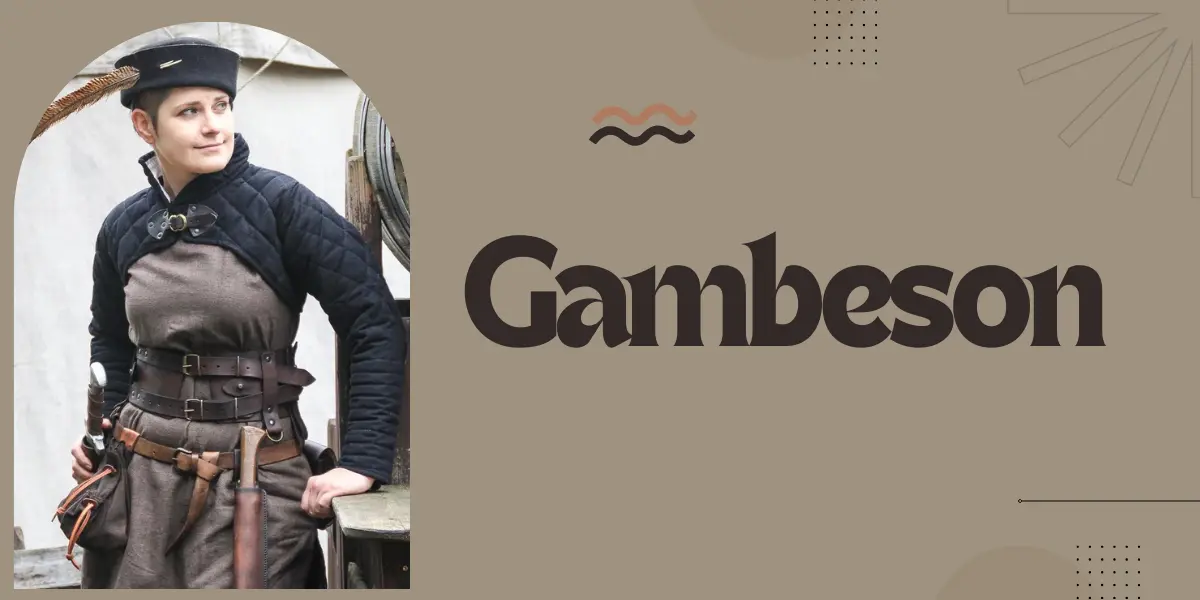The gambeson is a type of quilted armor that has played a crucial role in the history of medieval warfare. Known for its versatility and protection, the Gambeson is not just a piece of armor but a significant cultural artifact that reflects the ingenuity of historical craftsmanship. This article delves into the origins, construction, and various applications of the gambeson, providing a thorough understanding of this essential piece of medieval attire.
The Historical Significance of Gambesons
Origins and Evolution
The gambeson, also known as an aketon or quilted jacket, first appeared in Europe during the early Middle Ages. Its primary purpose was to serve as a padded defensive jacket worn under or over mail armor. The use of gambesons can be traced back to the 9th century, when it evolved alongside advancements in military technology and armor design.
Medieval Warfare and Gambesons
During the medieval period, gambesons were indispensable to soldiers, providing a layer of protection that absorbed and distributed the force of blows from weapons. This padded armor was particularly effective against blunt force trauma and was often worn under chainmail or plate armor. In some cases, gambesons were worn alone by infantry due to their affordability and ease of manufacture.
Cultural and Social Impact
Beyond their military application, gambesons also held cultural significance. They were often customized with heraldic symbols and colors, reflecting the wearer’s allegiance and status. This personalization made gambesons a form of expression, highlighting the intersection between function and identity in medieval society.
Construction and Materials
Materials Used
The construction of a gambeson involves a variety of materials, each chosen for its durability and protective qualities. Common materials include:
- Linen: Known for its strength and breathability, linen was often used as the outer layer.
- Wool: Valued for its insulating properties, wool was commonly used as the filling material.
- Cotton: Although less common, cotton provided an alternative for the inner lining due to its comfort.
Crafting Techniques
Creating a gambeson requires skilled craftsmanship and meticulous attention to detail. The process involves:
- Layering: Multiple layers of fabric are stitched together to form the quilted structure.
- Padding: The layers are filled with padding materials such as wool or horsehair to enhance protection.
- Quilting: The layers are then quilted in a specific pattern to ensure even distribution of padding and maintain structural integrity.
Customization and Variations
Gambesons were often tailored to meet the specific needs of the wearer. Variations included:
- Sleeved and Sleeveless: Depending on the level of mobility required, gambesons could be crafted with or without sleeves.
- Length: Gambesons varied in length, ranging from waist-length to full-length designs, offering different levels of protection.
- Thickness: The thickness of a gambeson was adjusted based on the type of armor it was intended to complement.
Uses of Gambesons
Military Applications
In medieval warfare, gambesons were a vital component of a soldier’s armor. Their padded construction provided:
- Impact Absorption: Reducing the risk of injury from blunt weapons.
- Flexibility: Allowing for greater movement compared to rigid armor.
- Layered Protection: Serving as a cushion under heavier armor like chainmail or plate.
Civilian and Practical Uses
Beyond the battlefield, gambesons found practical applications in civilian life:
- Labor Protection: Workers and craftsmen used gambesons for protection against physical labor-related injuries.
- Cold Weather Garment: The insulating properties of gambesons made them suitable for use as winter clothing.
Gambesons in Modern Times
Reenactment and Historical Preservation
Today, gambesons are popular among historical reenactors and enthusiasts. They are meticulously crafted to replicate historical designs and are used in:
- Reenactment Events: Providing an authentic experience of medieval combat and daily life.
- Museum Exhibits: Showcasing the craftsmanship and historical significance of medieval armor.
Martial Arts and Combat Sports
Modern martial artists and practitioners of historical European martial arts (HEMA) also utilize gambesons for:
- Training: Offering protection during sparring and training sessions.
- Competition: Used in historical combat competitions to ensure safety and authenticity.
Conclusion
The Gambeson is a remarkable piece of historical armor that embodies the ingenuity and craftsmanship of medieval times. Its evolution from a simple padded jacket to a versatile piece of armor highlights its importance in the history of warfare and culture. Whether used for protection in battle, as a status symbol, or as a practical garment, the gambeson remains a fascinating and enduring artifact.
Read our more Blogs…



